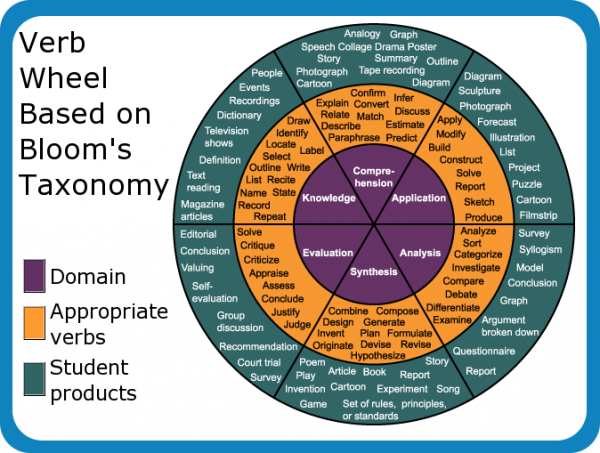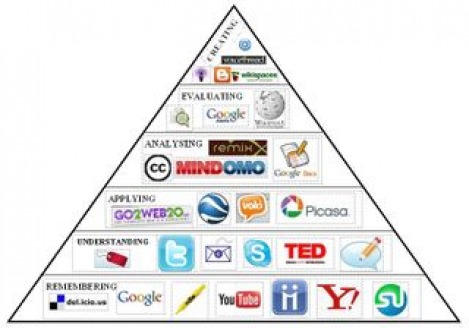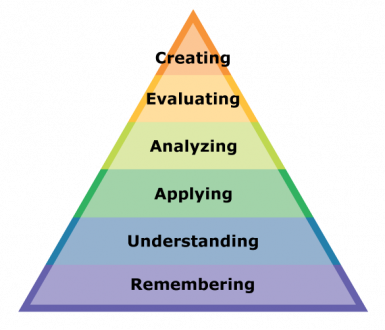Standards & Objectives

Found @ http://www.alline.org/euro/bloom.htm
At the end of this lesson, you will be able to:
· (Knowledge Level)identify4 different varieties of composition forms and genres for different audiences.
· (Knowledge Level)reproduce 4 different varieties of composition forms and genres for different audiences.
· (Comprehension Level)compare self to text in making connections between characters and simple events in a literary work with people and events in one's own life.
· (Comprehension Level)listen and respond to familiar stories and poems by discussing and recountingpersonal experiences.
· (Application Level)demonstrateproper manuscript and full transition to cursuve writing techniques: posture, paper placement, pencil grip, letter formation, slant, letter size, spacing, rhythm, alignment.
· (Application Level)produce a portfolio of writing projects composed in a variety of forms and genres for different audiences (e.g. journals, letters, reports, stories).
· (Analysis Level)examine a variety of literature composed in a variety of forms and genres for different audiences (e.g. journals, letters, reports, stories).
· (Analysis Level)classify and categorize a variety of literature composed in a variety of forms and genres for different audiences (e.g. journals, letters, reports, stories) with the use of graphic organizers and visualization techniques to interpret information (e.g. charts, graphs, diagrams).
· (Synthesis Level) rewrite 4 different varieties of composition forms and genres for different audiences.
· (Synthesis Level)plan 4 different varieties of composition forms and genres for different audiences.
· (Evaluation Level)explain, in writing, a comparison of self to text in making connections between characters or simple events in a literary work with people in one's own life.
· (Evaluation Level)recommend a piece of literature to other readers by summarizing it in a report after listening to familiar stories and poems composed in a variety of forms and genres for different audiences.
· **Objectives were written using the formatting tool @ http://www.radiojames.com/ObjectivesBuilder/ and West Virginia CSOs found on the WVDE website @ http://wveis.k12.wv.us/Teach21/public/cso/cso.cfm-.
WV CSOs
3rd Grade CSOs:
· RLA.O.3.2.9 Students will compose in a variety of forms and genres for different audiences (e.g. diaries, journals, letters, reports, stories).
· RLA.O.3.3.1 Students will listen and respond to familiar stories and poems (e.g. summarize and paraphrase to confirm comprehension, recount personal experiences, imagine beyond literacy form.)
· RLA.O.3.2.1 Students will demonstrate proper manuscript and full transition to cursive writing techniques:
o Posture
o Paper placement
o Pencil grip
o Letter formation
o Slant
o Letter size
o Spacing
o Rhythm
o Alignment
· RLA.O.3.1.10 Students will compare self to text in making connections between characters or simple events in a literary work with people and events in one’s own life and other cultures.
· RLA.O.3.1.13 Students will use graphic organizers and visualization techniques to interpret information (e.g. charts, graphs, diagrams).
· RLA.O.3.2.9 Students will compose in a variety of forms and genres for different audiences (e.g. diaries, journals, letters, reports, stories).
· RLA.O.3.3.1 Students will listen and respond to familiar stories and poems (e.g. summarize and paraphrase to confirm comprehension, recount personal experiences, imagine beyond literacy form.)
· RLA.O.3.2.1 Students will demonstrate proper manuscript and full transition to cursive writing techniques:
o Posture
o Paper placement
o Pencil grip
o Letter formation
o Slant
o Letter size
o Spacing
o Rhythm
o Alignment
· RLA.O.3.1.10 Students will compare self to text in making connections between characters or simple events in a literary work with people and events in one’s own life and other cultures.
· RLA.O.3.1.13 Students will use graphic organizers and visualization techniques to interpret information (e.g. charts, graphs, diagrams).
Bloom's Taxonomy
Blooms Taxonomy & Technology:

Found @ http://www.angelamaiers.com/2009/03/it-was-1956-when-benjamin-bloom-created-this-taxonomy-for-categorizing-levels-of-learning-and-understanding-it-has-provided.html
the work of Mike Fisher: where to place many of the new technology tasks and tools within this long-standing hierarchical guide to teaching and learning.

